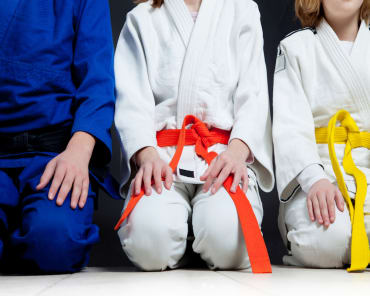
Brazilian Jiu-Jitsu (BJJ) is an intricate martial art that offers endless opportunities for learning and growth. As you progress beyond the basics, you’ll encounter advanced techniques that require a deeper understanding of body mechanics and strategy. Here’s a breakdown of some complex moves to enhance your BJJ game.
1. Berimbolo
The Berimbolo is a modern and highly effective technique used to transition from the De La Riva guard to taking the opponent’s back.
- Execution: Start in De La Riva guard with a grip on your opponent’s collar and pants. Use your legs to off-balance your opponent and invert your body, rolling under them. As you roll, maintain control of their leg and hips to spin them around and take their back.
- Key Points: Focus on maintaining your grips and using your legs to control your opponent’s movement. Timing and precision are crucial for successfully executing the Berimbolo.
2. Omoplata
The Omoplata is a shoulder lock that transitions smoothly into sweeps and submissions.
- Execution: From closed guard, control your opponent’s wrist and shift your hips to the side. Thread your leg over their shoulder, creating a figure-four position with their arm. Sit up and rotate your body to apply pressure on their shoulder, forcing a tap.
- Key Points: Keep your opponent’s posture broken and use your hips to create leverage. The Omoplata can transition into various sweeps if the submission fails.
3. Inverted Guard
The Inverted Guard involves inverting your body to create angles for sweeps and submissions.
- Execution: From the open guard, invert your body by rolling onto your shoulders and bringing your legs overhead. Use your legs to control your opponent’s hips and create opportunities for sweeps or submissions.
- Key Points: Flexibility and core strength are essential for maintaining control while inverted. Use your grips to stabilize your position and stay offensive.
4. X-Guard
The X-Guard is a powerful position that offers numerous sweeping opportunities.
- Execution: From single-leg X-Guard, slide your hips under your opponent and hook their far leg with your foot. Control their near leg with your other foot and use your grips to off-balance them. Sweep your opponent by extending your legs and controlling their upper body.
- Key Points: Maintain strong grips and use your legs to control your opponent’s balance. The X-Guard offers multiple sweeps and transitions, making it a versatile position.
5. Lapel Guard
The Lapel Guard utilizes your opponent’s lapel to create control and leverage.
- Execution: From the open guard, grip your opponent’s lapel and thread it under their leg or around their back. Use the lapel to control their posture and create angles for sweeps and submissions.
- Key Points: The lapel acts as an additional limb, giving you more control. Experiment with different grips and setups to maximize the effectiveness of the Lapel Guard.
6. Arm Drag to Back Take
The Arm Drag to Back Take is a high-percentage move for transitioning to a dominant position.
- Execution: From sitting guard, control your opponent’s wrist and tricep. Pull their arm across your body while scooting your hips to the side. Use the momentum to take their back, securing hooks and a seatbelt grip.
- Key Points: Timing and leverage are crucial for the arm drag. Use your legs to assist in the movement and secure back control.
Mastering these advanced techniques requires dedication, drilling, and live practice. As you integrate them into your game, focus on precision and fluidity. Each move opens new possibilities for control, submissions, and sweeps, enhancing your overall BJJ proficiency. Remember, the journey of learning BJJ is continuous, and embracing advanced techniques will elevate your skills to new heights.






